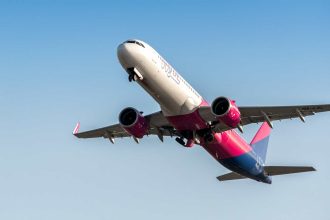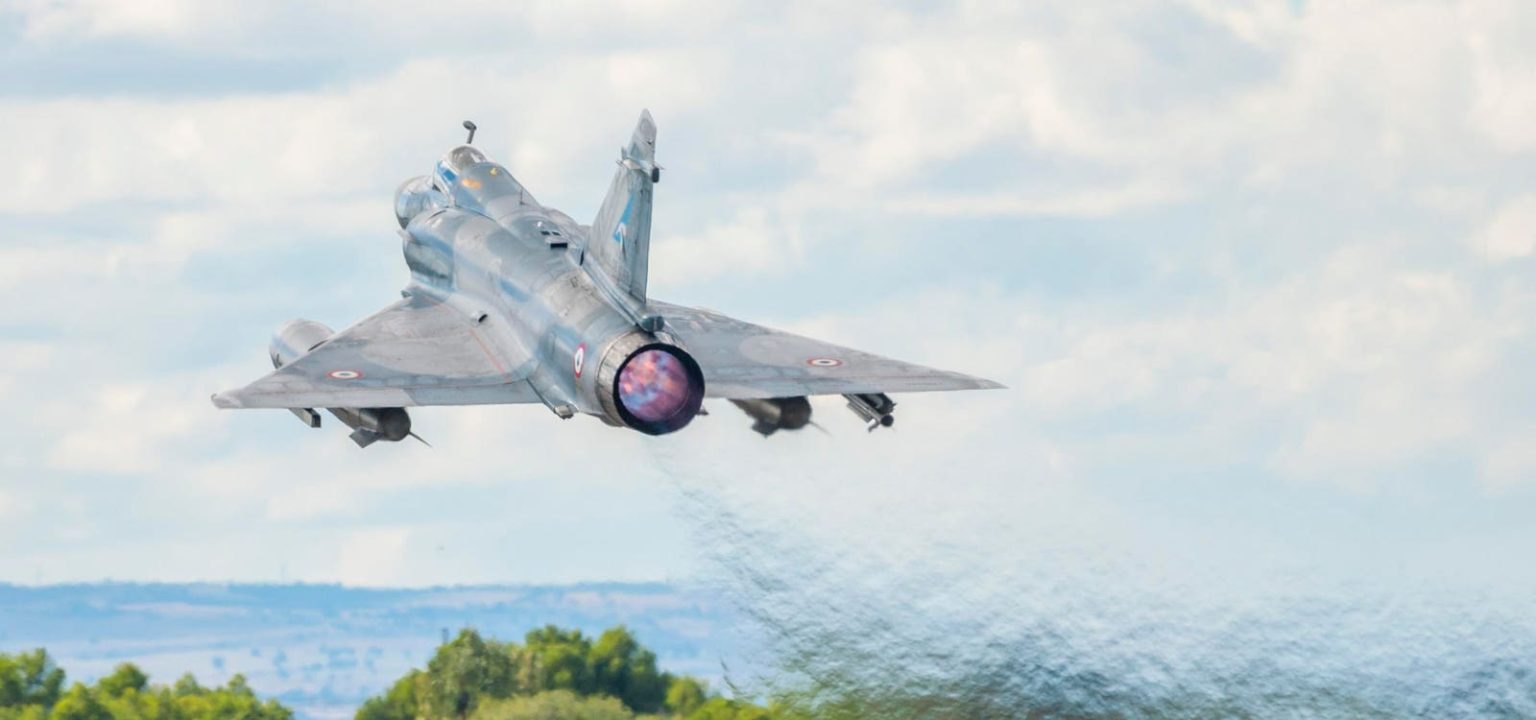The first three ex-French Dassault Mirage 2000-5 fighters are scheduled to arrive in Ukraine before the end of April, French newspaper La Tribune reported. The newspaper also confirmed what French Pres. Emmanuel Macron implied when he pledged surplus Mirage 2000-5s to Ukraine back in June: the supersonic jets will come fitted for Ukraine’s best French-made air-to-ground weapons, including SCALP-EG cruise missiles and Hammer glide bombs.
Capable of striking targets as far away as 155 miles—the maximum range of the inertially-guided, turbojet-powered SCALP-EG and similar, British-made Storm Shadow—the Mirage 2000-5s promise to expand the Ukrainian air force’s capacity for deep strikes on Russian targets in occupied Ukraine.
It wasn’t a foregone conclusion the ex-French Mirage 2000-5s would be capable of air-to-ground strikes. In French service, the speedy jets strictly fly air-to-air sorties with their pulse-Doppler RDY radars and MICA missiles. The Taiwanese air force also deploys its Mirage 2000-5s for air defense, counting on the jets’ excellent rate of climb to position them for short-notice interceptions of intruding Chinese planes.
But the Ukrainian air force arguably needs strike planes more than it needs air-defense planes right now, as it has opted to deploy its growing fleet of up to 85 ex-European Lockheed Martin F-16s in the air-to-air role—at least until American-made Joint Standoff Weapon glide bombs begin arriving.
The F-16s will complement the pre-war fleet of Mikoyan MiG-29s and Sukhoi Su-27s that currently fly aerial patrols. The Mirage 2000s will complement the pre-war Sukhoi Su-24 bombers that are currently the Ukrainian air force’s only cruise missile carriers.
It’s not that the Ukrainians are about to run out of the twin-engine, supersonic Su-24s. The Ukrainian air force’s sole Su-24 unit, the 7th Tactical Aviation Brigade, went to war in February 2022 with just a dozen or so flyable jets. In 32 months of hard fighting, it has lost 18 jets to Russian missiles.
But Ukraine inherited around 200 Su-24s from the Soviet Union in 1991, and many of the airframes are still viable. Working tirelessly, air force technicians have restored so many old bombers that the 7th Tactical Aviation Brigade actually has more planes now than it did before the Russians attacked. “Much more,” said Col. Yevhen Bulatsyk, the brigade’s commander.
The dozen or more Mirage 2000-5s France plans to give to Ukraine will be additive. How many more deep-strike sorties the Ukrainian air force will be able to fly once it’s formed a Mirage 2000 unit could depend more on the supply of missiles than the supply of jets. It’s unclear how many SCALP-EGs and Storm Shadows Ukraine has already received from France and the United Kingdom—and how many more of the 2,900-pound missiles Ukraine could get in the coming months.
Before 2022, the Royal Air Force probably had fewer than 1,000 Storm Shadows in its inventory. The French air force was sitting on fewer than 700 SCALP-EGs. Neither air force is likely to give away all or even most of its missiles, so Ukraine might get a few hundred, in total.
French industry is trying to make more missiles available. According to Radio France Internationale, missile-maker MBDA has been restoring expired French air force SCALP-EG for onward transfer to Ukraine. It’s also possible the French government has been fetching old SCALP-EGs from foreign buyers—and reconditioning those missiles for Ukraine, too.
The cruise missiles are the Su-24s’ and Mirage 2000-5s’ only deep-strike weapons, of course. The Su-24s and Mirage 2000-5s are also compatible with French-made Hammer glide bombs. The Sukhois can also carry a new Ukrainian-made glide bomb that might actually be a copy of the French munition—and which should also work with the Mirage 2000-5.
The big difference between the cruise missiles and the glide bombs is range. The bombs travel around 40 miles—a quarter the distance of a Storm Shadow or SCALP-EG. To strike with glide bombs, a Su-24 or Mirage 2000-5 would have to fly closer to Russian air defenses.
It’s risky—and could result in higher losses. It would be cold comfort to the Ukrainian air force that, once Mirage 2000-5s arrive, it would have a few more jets to spare.
Read the full article here





